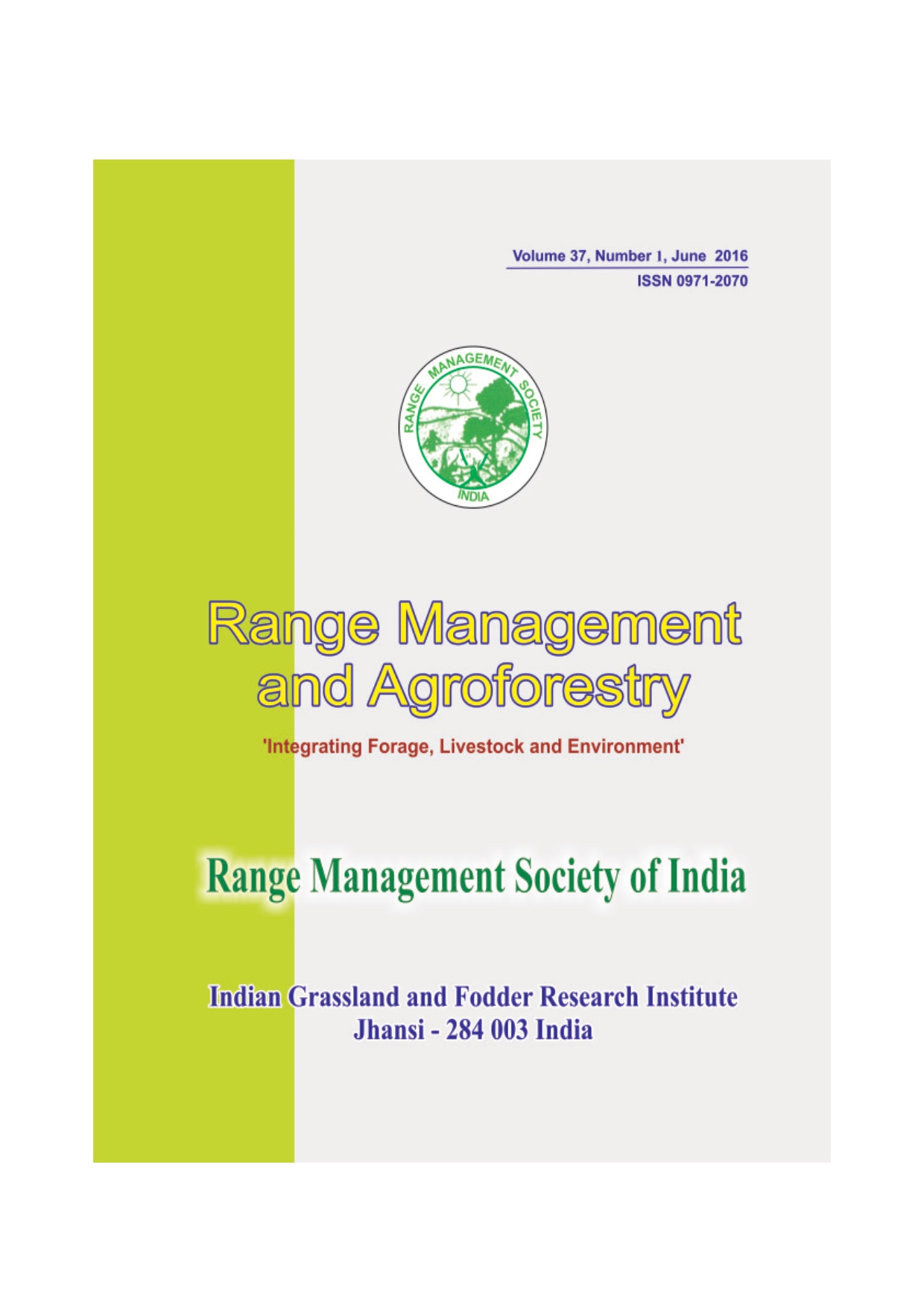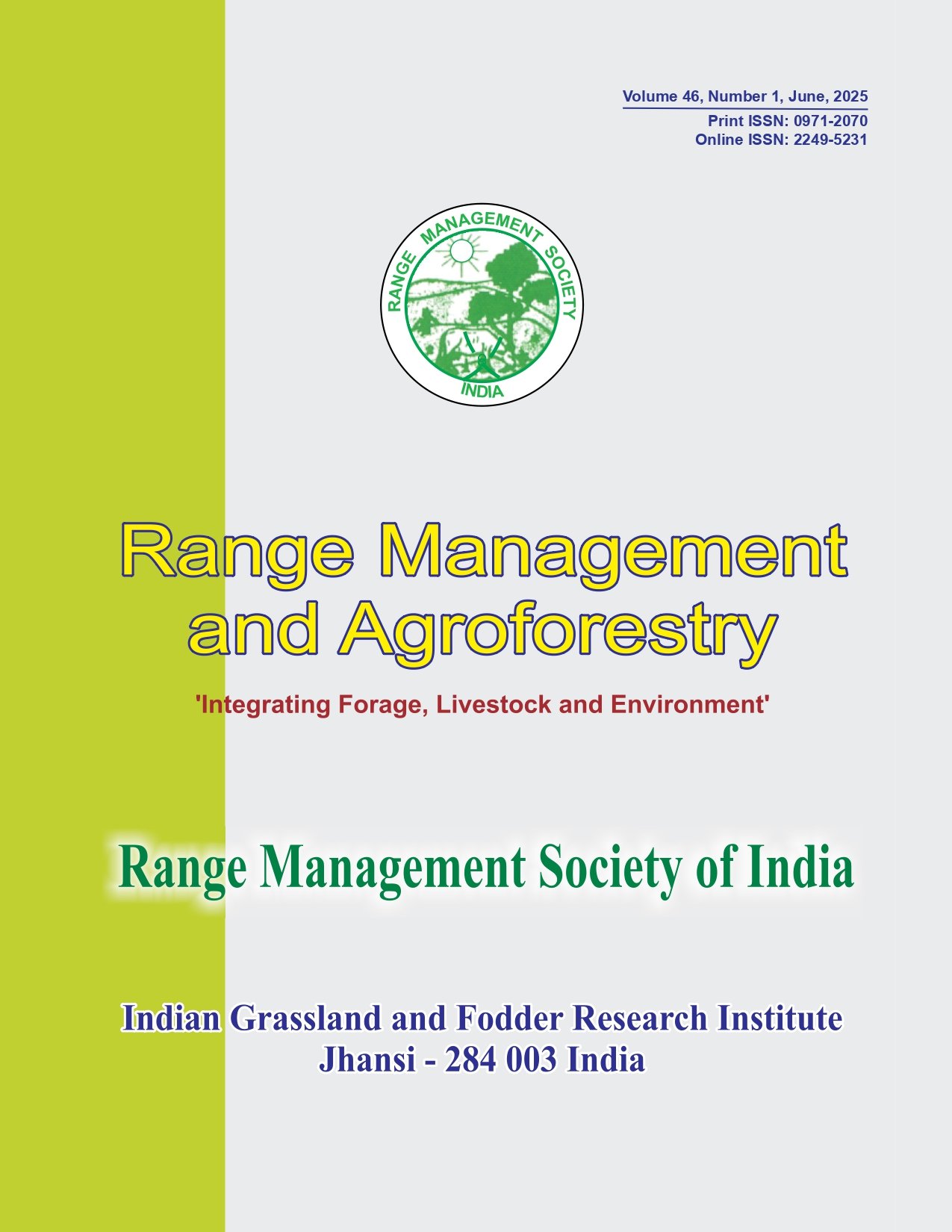Soil quality under Grewia optiva based agroforestry systems in western sub-Himalaya
Keywords:
Grewia, Hydraulic conductivity, Organic carbon, Soil quality, Water stable aggregatesAbstract
Soil quality assessment was done in Grewia (Grewia optiva) based agroforestry system in Himalayan foothills. Soil samples were collected from six different treatments viz., (i) Sole Grewia (ii) Grewia + Finger millet (Eleusine coracana), iii) Grewia + Barn yard millet (Echinochloa crus-galli), iv) Finger millet alone, v) Barn yard millet alone and vi) fallow and evaluated for different soil properties and soil quality. There were significant differences in soil properties and quality under different treatments after four year of plantation. Saturated hydraulic conductivity was higher in sole Grewia (1.45 cm h-1) plots followed by that under agroforestry plots (0.80-0.95 cm hr-1). Soil bulk density was least in sole Grewia plot (1.40 mg m-3) and was highest (1.50 mg m-3) in fallow plots. Water stable aggregates were 16-18 % higher in agroforestry plots. In sole Grewia plots increase of 42% was observed for water stable aggregates as compared to fallow plot. Organic carbon increased by 13-46% in different treatments as compared to fallow plot. N, P and K were also higher under sole Grewia and agroforestry plots. The soil quality index (Q) varied from 0.32 in fallow to 0.50 in sole Grewia thereby indicating the superiority of forest land use system in terms of maintaining greater soil quality than other land-use systems. Results further reveals that as compared to sole Grewia plots, there was 33% reduction in soil quality in fallow plots and 16.8- 22.8% in agriculture plots. Soil quality in agroforestry plots was comparatively better than sole crops and fallow with only 6.9% reduction in soil quality as compared to sole Grewia.




